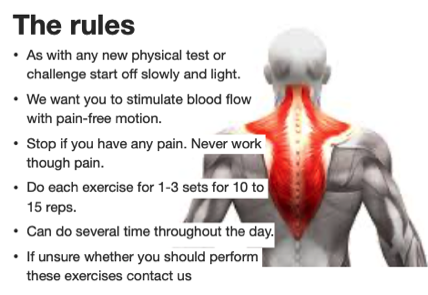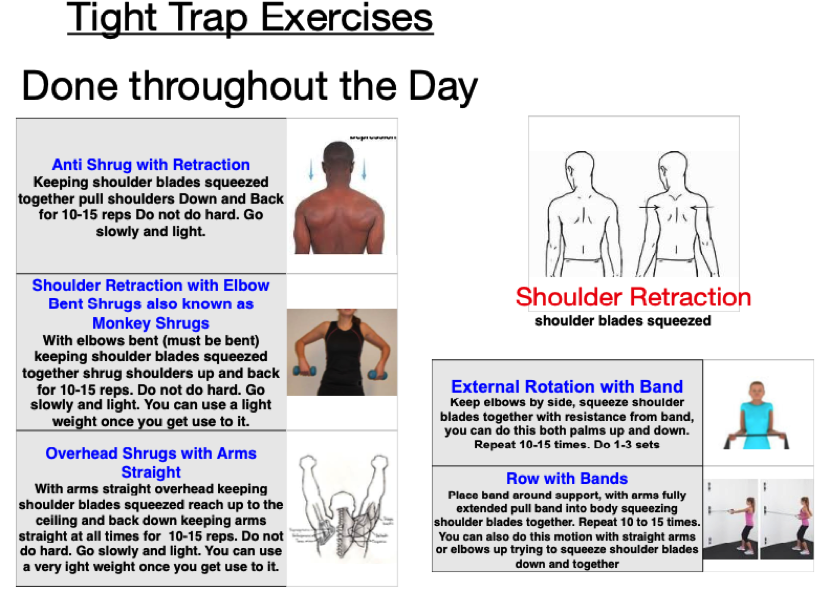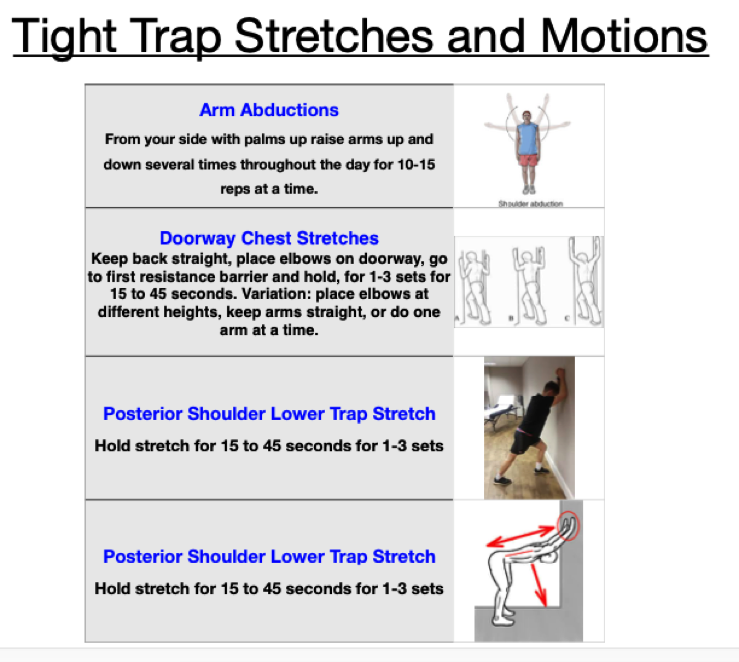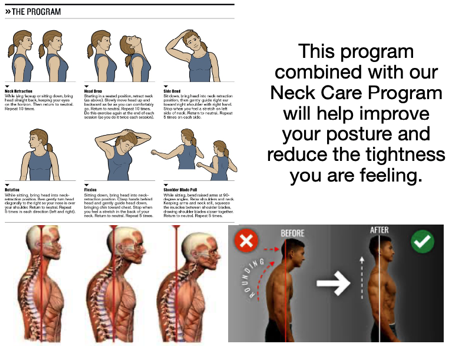Upper (Traps) and Mid Back Care Program
Know Your Joints
WELCOME TO OUR UPPER AND MID BACK CARE PROGRAM. PLEASE WATCH THE VIDEO TO THE RIGHT DESCRIBING SOME BASIC UPPER BACK CARE PRINCIPLES AND THEN SEE AND DOWNLOAD THE EXERCISE LISTS BELOW TO START. WE WILL ADD ADDITIONAL EXERCISES IN THE FUTURE.
Make an appointment with us either in person or online to talk about a conditioning program that is specific for you. Email us at fittec@me.com. Every body is different so every conditioning program must be designed to account for that.

Causes of Pain in Upper Back
There are several possible causes of trapezius pain, including:
• Overuse
• Stress
• Poor posture
• Trauma
I feel one of the biggest culprits next to poor posture and stress is lack of motion and weakness. This program addresses that.
WHY THIS PROGRAM: Exercise Therapy for tight traps and neck from Pysiopedia.com
Different forms of exercise is recommended for acute or persistent neck pain.
Physical activity and exercise have been proven to give the most immediate and long-term pain relief in patients with trap pain. Both general fitness training and specific strength training generate significant effects on decreasing pain. However; strength training has been proven to be more effective compared to general fitness training. High-intensity strength training relying on principles of progressive overload for 20 minutes has been shown to be successful in reductions of neck and shoulder pain. Following a specific neck strengthening exercise program for up to 1 year can lead to long term reduction and further prevention of recurring pain even after the strength program has ceased.
Shoulder shrugs: The subject is standing erect and holding the dumbbells to the side, then elevates the shoulders while focusing on contracting the upper trapezius muscle.
One-arm row: The subject bends their torso forward to approximately 30° from horizontal with one knee on the bench and the other foot on the floor. The subject now pulls the dumbbell towards the ipsilateral lower rib, while the contralateral arm is maintained extended and supports the body on the bench.
Upright row: The subject is standing erect and holding the dumbbells while the arms are hanging relaxed in front of the body. The dumbbells are lifted towards the chest in a vertical line close to the body while flexing the elbows and abducting the shoulder. The elbows are pointing out- and upwards.
Reverse flies: The subject is prone on a bench at a 45° angle from horizontal and the arms pointing towards the floor. The dumbbells are raised until the upper arm is horizontal, while the elbows are in a static slightly flexed position (~5°) during the entire range of motion.
Lateral raise: The subject is standing erect and holding the dumbbells by their side, and then abducts the shoulder joint until the upper arm is horizontal. The elbows are in a static slightly flexed position (5°) during the entire range of motion.
Exercise has been shown to increase blood flow and therefore oxygenation to areas of the body with increased anaerobic muscle metabolism.


